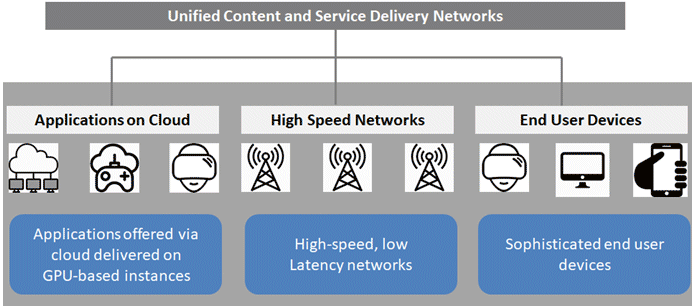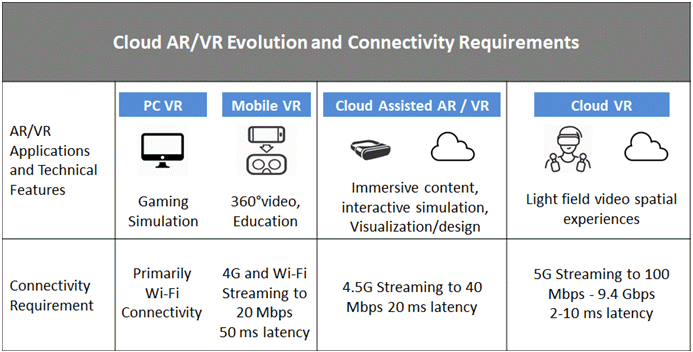Introduction
It only took 40 years for the evolution of gaming industry to progress from 4 bit to VR games. Continued shift in demographics, internet and mobile penetration, and the increased availability of gaming infrastructure made it possible. The average age of gamers in the world is 34 years; given that half of the world’s population is under 30, and 90% of world’s population will have internet access by 2030, this industry will continue to grow exponentially. As per various market estimates, the global gaming market is expected to surpass $200 billion by 2022. Interestingly, ~45% of global gaming revenue is generated through the mobile platform, and the remaining from consoles and PC. The share of mobile platform in gaming is expected to reach 60% by 2020, which clearly establishes the fact that the mobile will continue to dominate this space in future as well.
With 60% of its population under 30 years, 91% internet penetration, 74% smartphone penetration (80% by 2025), the Middle East is one of the most unique and attractive gaming markets. An average of 87% centennials in the region is active mobile gamers, playing 5 or more games for 20-40 minutes every day. It is also worth noting that the mobile is the most dominant gaming platform in the region as well. The region boasts of a young gaming population, high availability of required infrastructure, and a rapidly evolving ecosystem including regional developers and studios. Apart from that, there is an aggressive shift towards localisation of gaming content, e.g. ‘This is Football’ released on PS2 was the first release in Arabic; now MMO games like Dota2, Team Fortress 2, and Counter Strike have dedicated Middle Eastern live servers. Studios like Valve, Ubisoft have invested significantly in the region with Ubisoft setting up a development center in collaboration with Tadreeb. Other global studios like Activision Blizzard went on a series of acquisitions by buying emerging and profitable local companies.
AR / VR, and the Future of Gaming
The rise of AR / VR games along with the availability on cloud is bringing in another dimension, not only for gamers, but also for developers and other ecosystem players. While some AR / VR applications exist in healthcare, education, manufacturing and entertainment sectors; so far, AR / VR has witnessed the highest traction in gaming, which is obvious as these platforms are meant to deliver immersive experiences. Traditionally, workstations to run high quality AR / VR applications were expensive and required high processing power and bandwidth.
To leverage the growth of AR / VR and mobile platform gaming, mobile vendors accelerated their efforts in not only producing VR headsets, but also bundling them with mobile devices. One of the other factors that accelerated the growth of AR / VR is the rise of unified content and service delivery networks that enable cloud-based servers to deliver streamed applications over high-speed mobile networks via end-user devices. There is an increased usage of applications streamed from the cloud via enhanced mobile and fixed wireless access services. Huawei has introduced Cloud X which includes three types of services, namely cloud PC, cloud gaming and cloud AR/VR. Cloud X takes high quality gaming or application content, and brings them directly to the customers via cloud and wirelessly. Additionally, cloud X is well capable of delivering services leveraging mobile edge computing, and there by providing a superior immersive experience to users. Cloud AR / VR in particular is expected to witness significant growth with the launch of 5G services in the region; these services are expected to lower cost of data transmission and reduce latency to support such high powered, high resolution content delivered without the need to connecting with expensive workstations, and improving overall experience in the process.
Of the three more relevant use cases of unified content and service delivery networks (i.e. cloud PC, cloud gaming, and cloud AR / VR), gaming and AR / VR use cases are believed to show strong growth to the appeal of gaming for the masses. Additionally, cloud rendering is changing existing markets by reducing the need for expensive, dedicated, and high-end hardware for end users. This lowers the adoption barrier for consumers as it delivers a significant cost saving.
On the enterprise side, the demand for compute shifts to the cloud in more efficient and virtualized environments results in significant cost saving as well as higher availability for them. This has already changed the traditional business model and shifts it from a hardware- and product-oriented approach to on-demand provisioning. More so, it will be AR / VR use cases in the enterprise space that will accelerate the evolution of this game. AR / VR architecture is already being used in medical imaging, and there are several use cases in education, transportation, aviation, defense, communication, retail and other industries as well.
There is no doubt that AR / VR is the future of gaming, and a lot of it is expected to be delivered through cloud. That being said, seamless delivery of such an experience would require high-speed and low latency networks, something which most telcos in the region are well capable of delivering. However, immersive user experience will only grow popular when operators in the Middle Eastern region start rolling out new services and bundles over their 5G networks. Once ready, cloud AR / VR will deliver immersive experience at a lower cost of ownership for hardware, and will also shift the AR / VR market towards a market built on software and services. At the same time, with the availability of 5G networks, higher numbers of AR / VR or immersive applications would be available to better deliver on this exciting technology.
Like any other technology, current AR / VR adoption is facing challenges; e.g., low resolution and quality, latency, bulky or uncomfortable headsets, lack of applications, wired headsets, high cost of headsets, low battery power or frequent recharge issues. Additionally, there are challenges like dizziness for users, which is due to the motion to photon time gap. However, these challenges will gradually phase away as technology vendors continue to push their limits on the product development side, as well the deployment of 5G networks. It is also worth noting that some of these challenges would be eliminated by cloud AR / VR, while others would be addressed as technology evolves further.
Nevertheless, major device manufacturers are developing their AR/VR ecosystem in order to capitalize on the growing opportunity it offers. Global technology giants have already started introducing their VR products like Samsung (Gear VR) and Huawei (VR2), and are in the process of expanding their ecosystem to support the demand for VR content.
The wider telecom industry is also coming together to address some of these challenges. In November 2018 at Huawei’s global broadband forum, GSMA announced the launch of a new industry-wide initiative called the GSMA Cloud AR / VR Forum to promote the development of AR / VR technologies delivered using cloud as a platform. The forum aims to promote collaboration among industry partners in accelerating delivery and deployment of 5G cloud based AR / VR services. The forum will encourage knowledge sharing among its members as well as facilitate discussions on new business models, development of service reference architectures and technical development areas such as codec compression using ultra-low latency, GPU renderings in cloud and virtualisation as well as development of simpler interfaces for easier services deployment.
Opportunities for Telcos in AR / VR
Telcos have a strong and fundamental role in overcoming current challenges of the cloud AR / VR industry. Their strength in network infrastructure deployment and capabilities in distribution of devices will be critical for the evolution of this industry. However, AR / VR will also transform the role of operators in the ecosystem beyond the driver of this technology. Considering that AR / VR are the next big platforms, we could potentially consider the acceleration of the trend of consumers making decisions based on the visualisation of the content in front of their eyes, and thereby interact with devices through voice or visual recognition. This means a decline in the role of smartphones.
This certainly creates a new opportunity for telcos. Telcos are believed to have missed out on the opportunity to play a significant role in the smartphone ecosystem. In the event of the diminished role of smartphones, and the takeover of AR / VR, opportunities for telcos in a digital ecosystem go beyond connectivity. The role of telcos in the AR / VR ecosystem could potentially be categorised as connectivity provider, device distributor, open platform provider, and application and content provider. Of these, open platform provider, and application and content providers are the ones that will solidify their place in the ecosystem for the long term. As an open platform provider, telcos will position themselves as the link to connect different players in the AR / VR ecosystem, enabling them to develop solutions, ensuring interoperability and widespread adoption. As an application and content provider, telcos would collaborate with ecosystem players to deliver AR / VR applications and content for specific use cases. This will not only enable telcos to develop new revenue streams through content based revenue models, revenue sharing with developers, but also improve their market positioning, customer acquisition and retention, better customer engagement, and higher wallet share across both, consumer and enterprise segments of the market.






